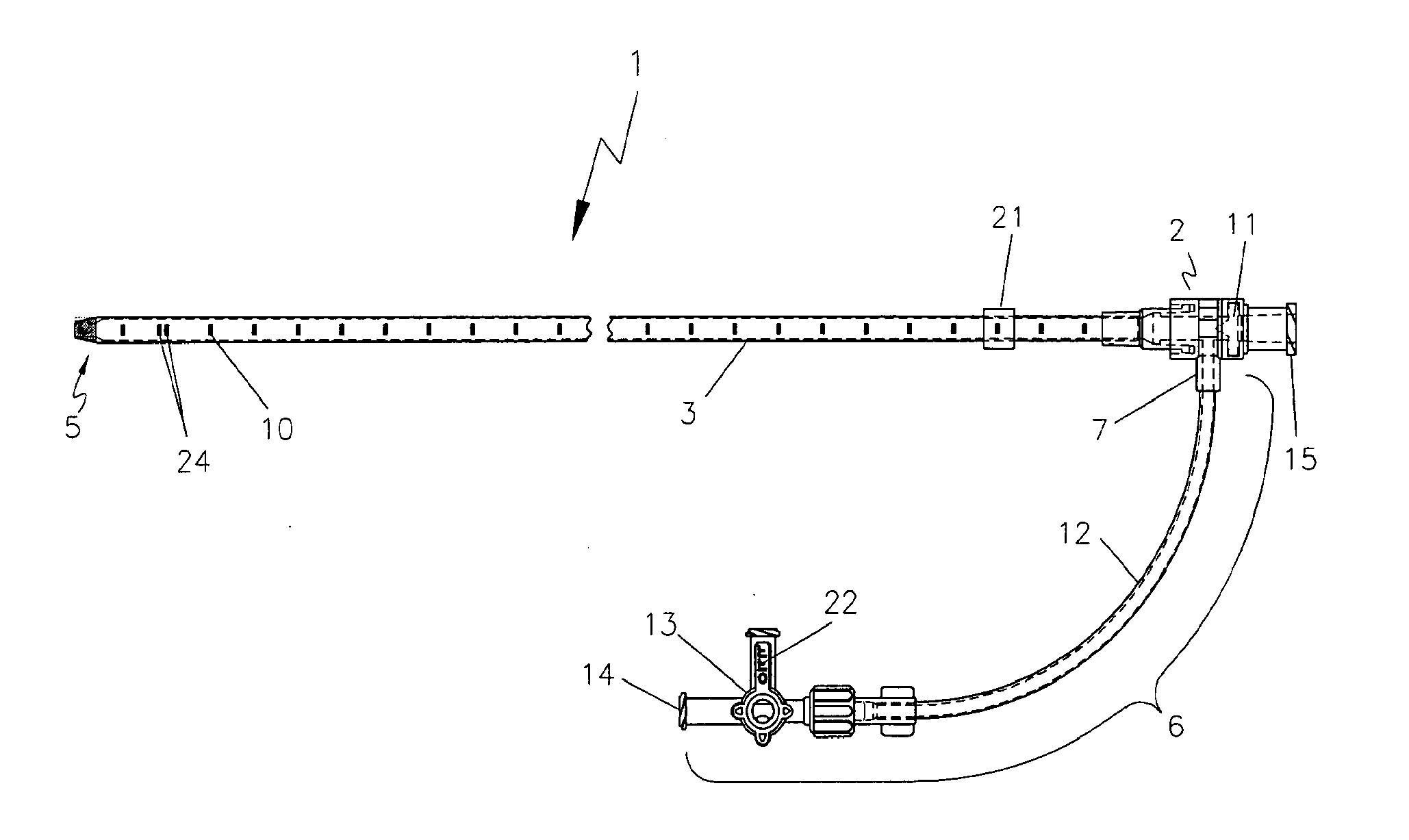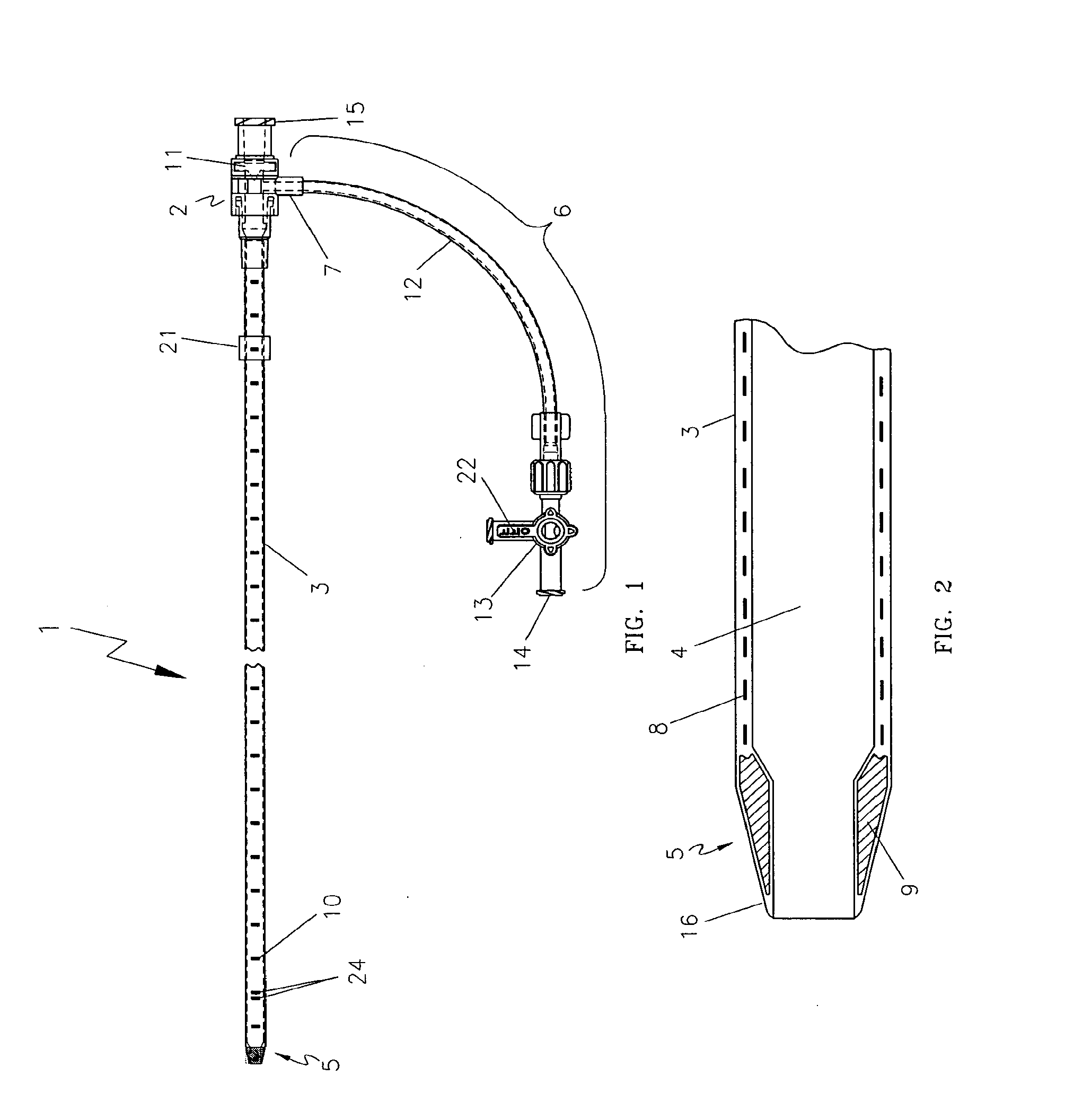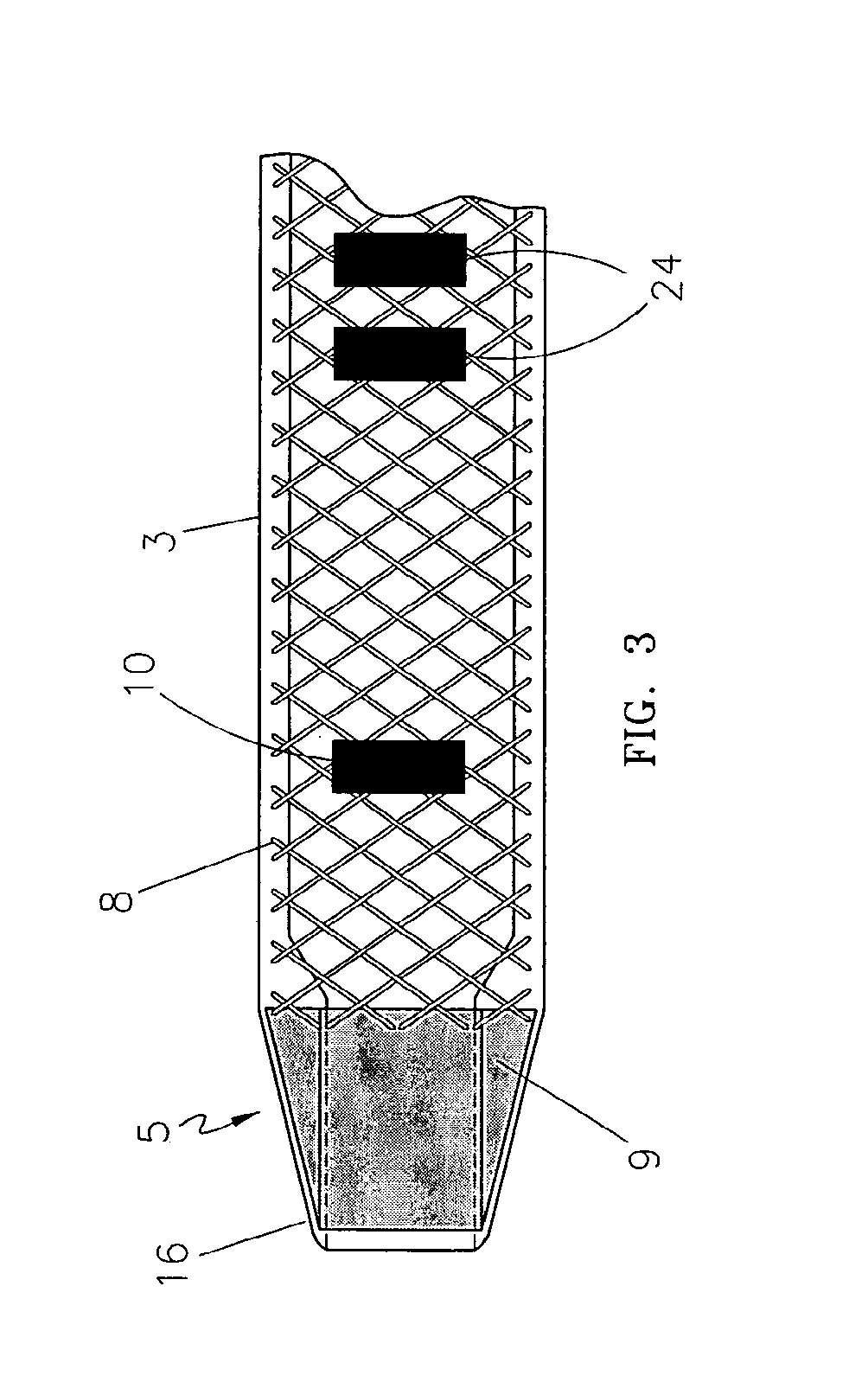Endovascular Treatment Apparatus and Method
- Summary
- Abstract
- Description
- Claims
- Application Information
AI Technical Summary
Benefits of technology
Problems solved by technology
Method used
Image
Examples
Embodiment Construction
[0031]One embodiment of the present invention is shown in FIG. 1 through FIG. 3. The endovascular laser treatment sheath 1 is comprised of a hub 2, shaft 3 with through lumen 4, and distal tip 5. The hub 2 may include a side arm assembly 6 for infusion or aspiration of fluids during the thermal treatment procedure. The sheath shaft 3 is comprised of a visibly translucent material reinforced with a wire 8 having a predefined pattern such as braided or coil-wound pattern which is embedded within the translucent material, as shown in FIG. 3. The outer wall of the sheath shaft 3 may include distance markers 10. An adjustable depth stop 21 is coaxially and slidably arranged around the sheath shaft 3.
[0032]The sheath tip 5 has a tapered outer profile as shown in FIG. 2 and FIG. 3. As is well known in the art, the taper provides a smooth transition from the outer diameter of the sheath shaft 3 to the smaller outer diameter of the sheath distal tip. The taper aids in insertion and advanceme...
PUM
 Login to View More
Login to View More Abstract
Description
Claims
Application Information
 Login to View More
Login to View More - R&D
- Intellectual Property
- Life Sciences
- Materials
- Tech Scout
- Unparalleled Data Quality
- Higher Quality Content
- 60% Fewer Hallucinations
Browse by: Latest US Patents, China's latest patents, Technical Efficacy Thesaurus, Application Domain, Technology Topic, Popular Technical Reports.
© 2025 PatSnap. All rights reserved.Legal|Privacy policy|Modern Slavery Act Transparency Statement|Sitemap|About US| Contact US: help@patsnap.com



